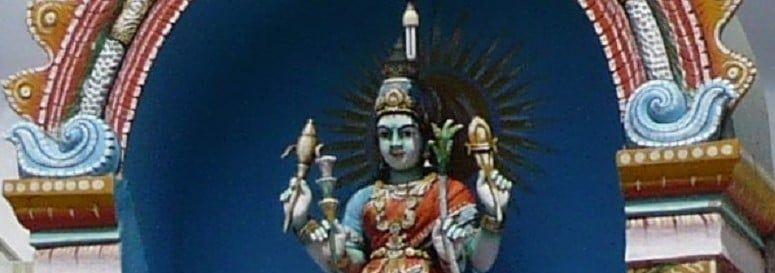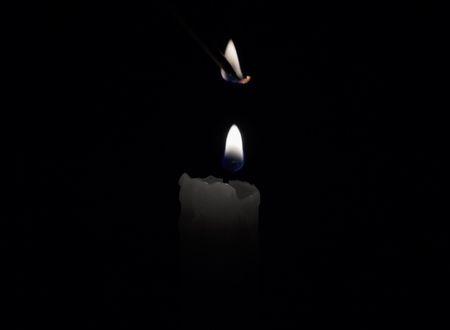Windows of Eternity – Part Two
However, there is also another meaning to the repetitive nature of the painting of Orthodox Icons, and that is many Icons represent that which is not made by human hands known in Greek as ‘acheiropoieten’. This stems from tradition and belief, that the pictures of Christ and Mary that have a supernatural origin: For example, the ‘Portrait of the Head of Christ’ which is shown on a linen cloth and is titled ‘Mandylion’.[1]
Apparently, this originated from a legend that when the prince of the Syrian town of Edessa fell ill and asked for someone to paint Christ, the artist was not able, saying that the countenance of Christ was too dazzling to paint, instead Christ placed his image onto a piece of linen.
One is struck by this and the Turin shroud and the other piece of linen, where the imprint is said to have been left by the resurrection of Christ.
By copying exactly; the power of an ‘achieropoieten’ is thought to be passed on. This is true of course of a true teacher of righteousness who can pass on the breath of the Holy Spirit to their disciples. In that way the disciple becomes in time like their teacher, and the power is passed on. By copying exactly; the power which is passed on to them by their teacher, is passed to their disciples.
Or is it a simpler explanation like is mentioned above. Unfortunately the ignorant in ignorance could very easily wipe from the earth vast treasures pointing to enlightenment. The Puritans believed by removing images and things of veneration like cutting down the Glastonbury thorn, because in their eyes it had become an object of idolatry, would draw people closer to God.[2] The Iconoclastic controversy is another example. From the 4th Century the Church Fathers asked the question; could God be portrayed or not? People were divided; those for and those who thought any image was sacrilege, and the Emperor Leo III gave the order in 726AD for all paintings to be taken from churches. It was really an act to calm Jews and Mohammedans,[3] yet the luminous colours of the ultimate primordial nature shines through the word, pattern and colours used in Mosques, the golden cherubim and golden inner covering of the Jewish Temple, and luminous stones of the breast plate of the High Priest.
The same colours, Lapis Lazuli, red and gold are used universally to denote the ground of being, earth and divinity. We can see this in all the rituals of the Temple and High Priest in Old Testament mentioned by Josephus mentioned below.
God however, could only reach people through human contact to show how he really was, true love and compassion and ultimate reality could only be displayed through human ‘touch’. The Catholic Church sees this as only applying to the Incarnation of Christ.
As Sufi Master Rumi’s table talk states regarding the importance of the spiritual path: that man came into this world for a specific task which if he does not complete it, then he has achieved nothing, even if he were to forget this task and did many other things. Like a king that has sent someone to a country with a certain mission, if they went and did many many things but forgot what they were sent for, they have in fact done nothing.[4]
The task is to recognise our true nature, our true image which is nothing other than God.
This is why it is important to understand the Icon in relation to holiness. We can understand the past by the present.
Human nature does not change unless transformed by God.
A recent event on the BBC news showing an Icon with both the Virgin Mary and Stalin on it, demonstrated to me just how easy it is to erase history. The digital archives housing all the atrocities that Stalin did was raided and destroyed, and the history books rewritten in a favourable light.[5]
This reminds me of the period in the Church at the time of Constantine, where Constantine was a brutal murderer, yet has been painted as an outstanding light if we read Bedes’ Opera Historica where he praises Constantine as if he were a deified God.[6]
The arrogance and superiority of the people residing at the Synod, the humiliating of Coleman at the Synod of Whitby is not a fruit of the Holy Spirit. In a matter of a few hundred years the primitive form of Christianity was lost and a worldly Kingdom of Priests in the name of Christ set up.
When we see all the writings of the heretics destroyed and libraries, one cannot but help draw a parallel between recent events and the past. How easy it is after a few generations to lose truth.
We can see from the example of Clement of Alexandria whom was adamant that the Holy Spirit was working through him, yet Isodore of Pelusium, Ep.I.310, on the Character of Cyril of Alexandria, states, there were many whom believed he was pursuing private animosities.[7]
Scholarly opinion as to Cyril’s involvement at instigation of these events do not agree, but it is thought that the case of Hypatia of Alexandria whom held the Chair of Philosophy in a branch of the Platonic school, whom was highly regarded by both pagans and Christians, but her privileged access to Orestes was thought to be something Cyril could not endure, she was murdered most horribly which was thought to have been instigated by Cyril: Whether instigated by Cyril or not, the case remains people holding the name and representing Christianity were involved. It was a Christian mob whom seized her and dragged her into the Cathedral where she was stripped and stoned to death with broken tiles from the roof, and then her body was cut into pieces and burned.[8]
From what we have read above, that was anger from the passions, from the wrong vine.
Father Yevstafy the Russian Orthodox priest whom put up the Icon of Stalin was stating according to legend that Stalin would ask the advice of the blessed Matrona, and that she in return gave him advice on defeating Nazi Germany. This is what the Icon depicted. He was reprimanded by the Metropolitanate of St Petersburg, but only really because it hit the media, a worldwide coverage which was lacking in the days of Constantine whom destroyed everything which was in opposition to him.[9]
We only have to look at the example of King David in the Old Testament whom wanted to build a Temple for God, yet God said because of the blood on his hands he would not allow him to do it, so it was Solomon his son who built it instead. However, it serves to show the illustration that anything that has been successful which has been built upon torture, suffering and spilt blood, is not success in the eyes of God. This kind of greatness God abhors.
We have to remember that ‘God’ is ‘beyond’ our emotions, senses, it is beyond our understanding and cannot be put into words, as Dionysus says in his Mystical Theology in his Complete Works:[10] It is beyond shape, form, and remains unchangeable, does not decay, divide, has no loss, nothing of which the senses can be aware of. [11]
The writer of the Cloud of Unknowing,[12] Saint Teresa of Avila, in her complete works,[13] that the senses become ‘suspended’, and St. John of the Cross: that if they want to find it then everything in them has to come to stillness, peace, the quieter they are the more the sun is able to illuminate it.[14]
[1] BRENSKE, STEFAN, BRENSKE, HELMUT, Icons Windows to Eternity: Bristol, Artline Editions, 1990, Tradition and Belief.
[2] RAYMOND, E, CAPTAIN, MA. A.L.A., F.S.A.SCOT. The Traditions of Glastonbury, The Biblical Missing Years of Christ, Answered, Oklahoma, Artisan Publishers, 2004, The Holy Thorn Tree, page 86.
[3] Ibid: The Iconoclastic Controversy.
[4] RINPOCHE, SOGYAL, The Tibetan Book of Living and Dying, London, Rider Books 1992, Chapter Nine, The Spiritual Path.
[5] The St. Petersburg Times, issue#1430(94), Tuesday, December 2, 2008, web address http://www.sptimes.ru/index.php?action-id=100&story-id=27741, and BBC News, Stalin voted third-best Russian from website, http://newsvote.bbc.co.uk/mpapps/pagetools/print/news.bbc.uk/2/hi/europe/780248… 29/12/2008.
[6]BEDE. Opera Historica. Book I & II With an English Translation in Two volumes. Ecclesiastical history of the English Nation based on the version of Thomas Stapleton 1565. W. Heinemann Ltd. London, Massachusetts, Harvard University Press. MSMLXII, Chapter XXXII.
[7]STEVENSON, J. Creeds, Councils and Controversies, Documents illustrating the history of the church AD 337-461, S.P.C.K. Church History Cambridge GB, University Cambridge Press, 1989, From Chapter 23, Cyril, Nestorius, and the Council of Ephesus,431,,228 The Character of Cyril of Alexandria, p319.
[8] RUSSEL, NORMAN, Cyril of Alexandria. London, Routledge, 2000, page No: 8 and 9. From, www.questia.com, electronic library.
LEATOMG. DAMOE, A/ The Appropriation of Divine Life in Cyril of Alexandria, Oxford, Oxford University Press, 2004. Page No: 2, from www.questia.com, electronic library.
STEVENSON, J. Creeds, Councils and Controversies, Documents illustrating the history of the church AD 337-461, S.P.C.K. Church History Cambridge GB, University Cambridge Press, 1989, From Chapter 23, Cyril, Nestorius, and the Council of Ephesus, 431,228, Chapter 22, The Church in Alexandria under Theophilus and Cyril to 420: Synesius and Hypatia. No: 213, The Murder of Hypatia, 415, page 284.
[9] MAXWELL-STUART, P.G, The Chronicle of the Popes, The Reign-by-Reign Record of the Papacy from St. Peter to the Present, London, Thames and Hudson, 1997.
[10] DIONYSIUS-PSEUDO, translator, LUIBHEID, COLM, ROREM, PAUL – unknown, ROQUES, RENE, – unknown, PELIKAN, JAROSLAV, -unknown, LECLERCQ, JEAN, – unknown, FROEHLICH, KARLFRIED, -unknown, Pseudo-Dionysius: The Complete Works, New York, Paulist Press, 1987, page 141, from Chapter Five, That the supreme Cause of every conceptual thing is not itself conceptual. [1045D] from www.questia.com
[11] Ibid, Chapter Four, That the supreme Cause of every perceptible thing is not itself perceptible, [1033D], p140.
[12] WOLTERS, CLIFTON, translator into modern English, The Cloud of Unknowing and Other Works, London, Penguin Group,1978,
[13] PEERS, ALLISON,E., translated by, The Complete Works of Saint Teresa of Jesus, Vol: 2, From the critical edition of P. Silverio de Santa Teresa, C.D., London, Sheed and Ward,1946.
[14] KAVANAUGH, KIERAN, RODREIGUEZ, OTILIO, translated by, The Collected Works of St. John of the Cross, Washington, D.C. ICS Pulications,1991, The Living Flame of Love, Stanza 3, p 687.









Comments & Discussion
5 COMMENTS
Please login to read members' comments and participate in the discussion.